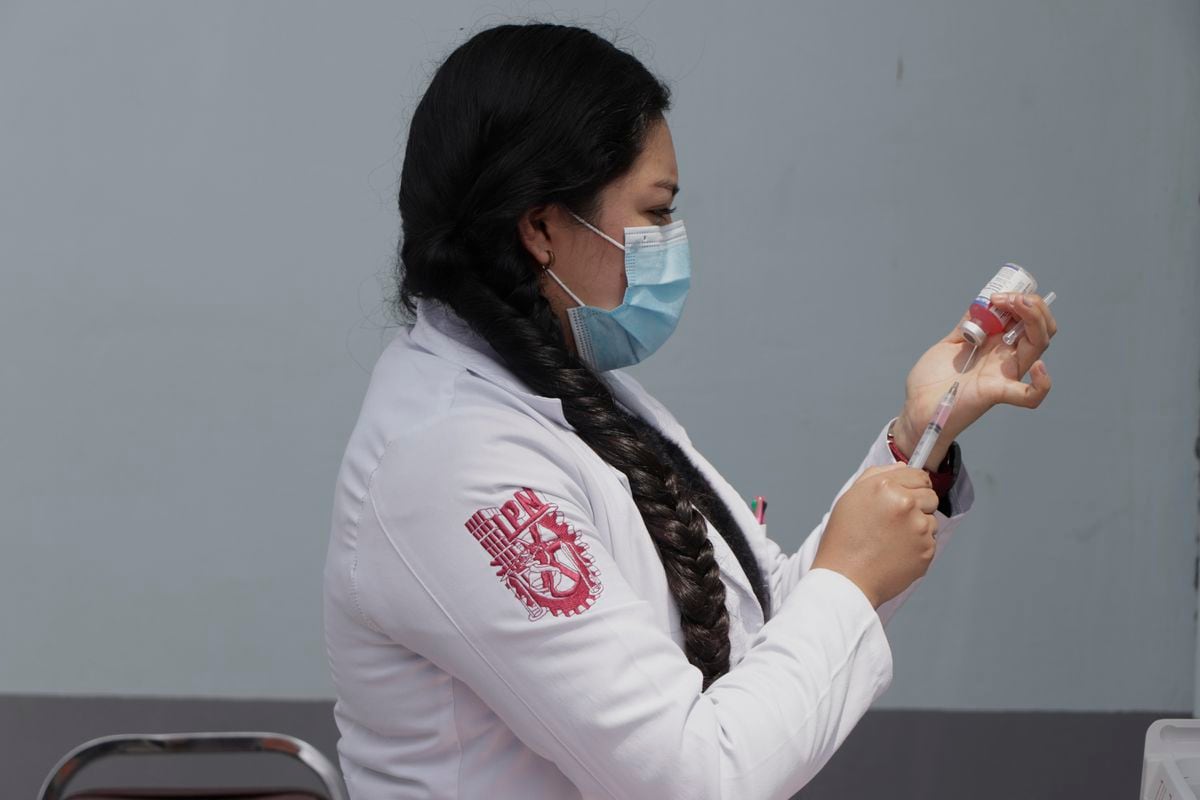A veterinarian prepares vaccines for the Canine and Feline Anti-Rabica Vaccination Day, in Mexico City in 2020.Gerardo Vieyra (Getty Images)
The epidemiological notice issued by the Government of Mexico after the appearance of 12 possible cases of rabies in the States of Sonora and Oaxaca have once again put the focus on the disease, which in the last month killed two Oaxacan minors and which has left a woman hospitalized in serious condition in Nayarit.
The Veterinary Medicine academic at the National Autonomous University of Mexico (UNAM), Francisco Monroy, considers the notice from the health authorities pertinent and defends that the elimination of the disease in Mexico is "unlikely."
"We are not close to eradicating rabies, due to weather issues and the fauna that we have," he concluded in a phone call with this newspaper.
"The fact that there are such a number of cases in such a short period of time is telling us something," reflects the academic, who believes that after what happened the authorities should introspect their care methods.
Of the 12 cases reported in recent days, nine were due to contact with the saliva of an infected dog in Bahía de Kino (Sonora), and the other three due to an attack by a bat in Oaxaca.
Although the case of the dog left a greater number of possible affected, Monroy believes that the problem of the development of rabies revolves around wild animals.
“Practically, we use the same vaccine as for dogs and cats, but the problem is management.
How do you go about vaccinating wild animals if they are already hard to find?
They would have to be captured and all this without causing them harm or stress”, he explains.
The Mexican authorities, says the academic, are trying to identify nuclei of animals where rabies is present in order to carry out more numerous vaccinations.
In recent weeks, bat attacks have caused the death of two other minors in the small rural municipality of Palo de Lima, also in Oaxaca.
Monroy considers that the figure of the animal has been "demonized" in a "counterproductive" way: "Most of the bat species are totally harmless and indispensable, they generally do not enter into rabies transmission cycles," considers Monroy, who says that the mammal helps pollination and pest control.
"We don't realize it, but we are actually invading the systems of these species and we are exposing ourselves to viruses," he says.
He points out that the cases that have appeared due to the attack of wild animals occur in remote populations, and believes that the authorities should pay "timely" attention in these places.
The Doctor Aurelio Valdivieso hospital, in Oaxaca (Oaxaca State), when the rabies patients were hospitalized, in December.Carolina Jiménez Mariscal (Cuartoscuro)
In 2019, the World Health Organization (WHO) announced that Mexico had eliminated human rabies transmitted by dogs as a public health problem.
Monroy sees in this announcement "a little confusion", in which even some colleagues have fallen.
“The WHO declaration was not about the disease being eradicated.
The difference between a territory free of the disease and eradication has generated confusion even among my colleagues, who have come to think that dogs no longer need to be vaccinated", he assures, alleging that it is key to maintain vaccination campaigns and bet on the castration of pets to avoid the appearance of stray dogs and cats.
“The status of the WHO is a recognition of the work carried out in recent years, but not to stop doing it,
but to continue with that work”, he concludes.
The announcement of the positive for rabies of the animal in Bahía de Kino led the Sonora Ministry of Health to supply 1,815 anti-rabies doses.
Monroy explains that, in the event of an attack by a rabid animal, two essential steps must be taken that mean "the difference between life and death": wash the wound with plenty of soap and water —which can reduce the viral load and reduce the risk by 99%—;
and go to a health center to receive the vaccine.
In additional cases, the academic highlights that a hyperimmune serum can be applied, which includes antibodies against the virus.
Between 2010 and 2019, there were 13 deaths related to rabies transmitted by wild animals in Mexico, according to official data from the Ministry of Health.
The application of millions of rabies vaccines in dogs and cats helped reduce human infections by these animals from 9,049 in 1990 to not having any positive reports in dogs in 2018 and 2019. If rabies is confirmed in any of the nine people close to the infected dog in Bahía de Kino, the first case in four years transmitted to humans from this type of animal would be reported.
subscribe here
to the EL PAÍS México
newsletter
and receive all the key information on current affairs in this country















